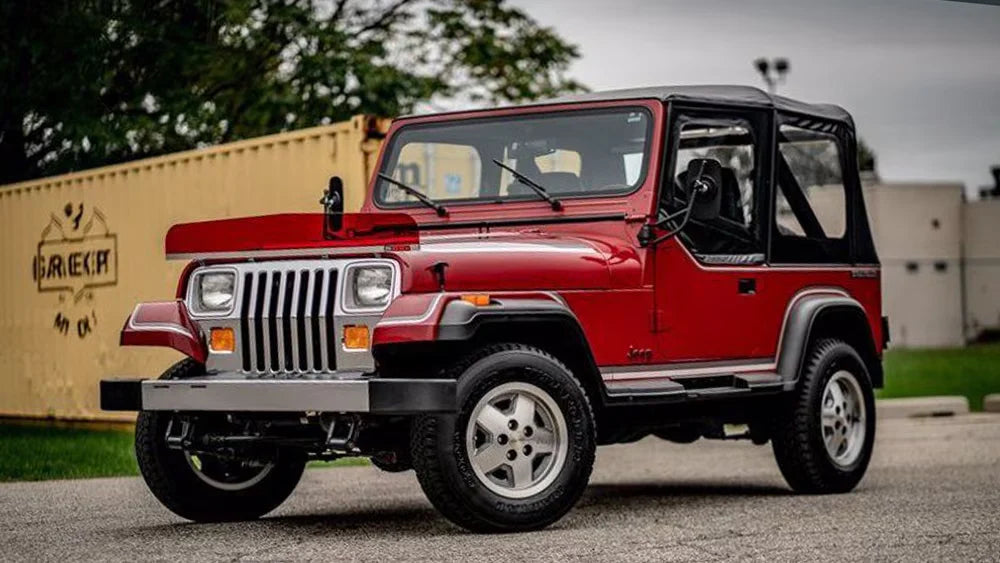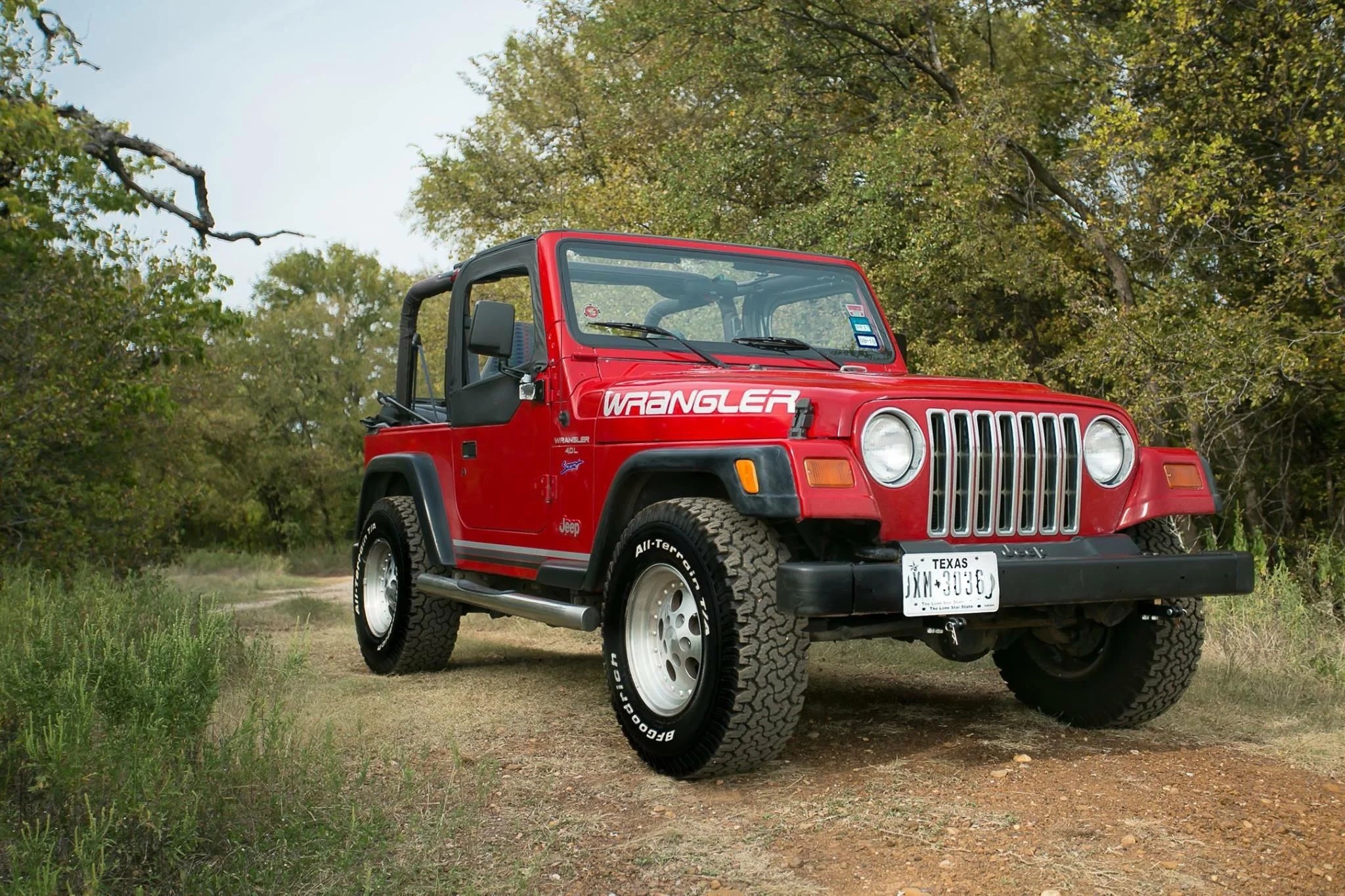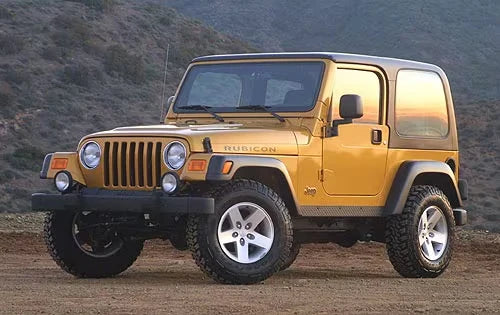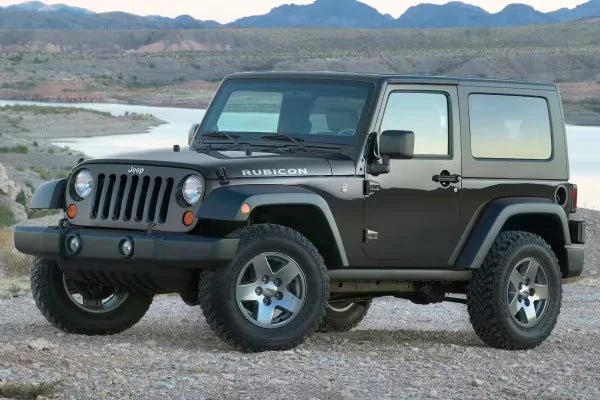Best 10 Years for Jeep Wrangler: An In-Depth Analysis

For enthusiasts looking to purchase a Wrangler, one question often arises: "What is the best year for a Jeep Wrangler?" This article delves into various models over the years, highlighting their strengths and weaknesses, to help you make an informed decision.
1987 (YJ) - Introduction of Wrangler

The year 1987 was a landmark for Jeep enthusiasts as it marked the introduction of the "Wrangler" name, evolving from the CJ series. The YJ retained the rugged essence of the CJ but added more comfort and road-friendly features, striking a balance between off-road capability and everyday usability.
- First use of the "Wrangler" name, marking a new era.
- Improved comfort for daily driving.
- Maintained the traditional ruggedness of the CJ series.
1997 (TJ) - Introduction of Coil Spring Suspension

A decade later, the TJ model brought back the much-loved round headlights. More significantly, it transitioned from leaf spring to coil spring suspension, markedly improving the Wrangler's ride quality and off-road ability. This suspension overhaul was a game-changer for the off-road community.
- Enhanced off-road capability with coil spring suspension.
- The return of the classic round headlights.
- Improved ride quality over various terrains.
2003 (TJ) - Refined TJ Model

By 2003, the TJ Wrangler had received various refinements, enhancing its reliability and comfort. These improvements did not compromise its off-road abilities, maintaining the Wrangler's reputation as a rugged, dependable vehicle for all terrains.
- Increased reliability and longevity.
- Enhanced comfort without sacrificing off-road performance.
- Upgraded features for a better driving experience.
2006 (TJ) - Last Year of the 4.0L Inline-Six Engine

The 2006 TJ is particularly notable for being the last year of the 4.0L inline-six engine, renowned for its durability and power. This engine has a cult following among Jeep enthusiasts for its reliability and robust performance.
- The robust and powerful 4.0L inline-six engine.
- High demand among enthusiasts for its durability.
- Strong performance in both on-road and off-road conditions.
2007 (JK) - Introduction of the JK Generation

The introduction of the JK generation in 2007 was a significant leap forward. Notably, this generation introduced the four-door model (Unlimited), greatly expanding the Wrangler's appeal and utility, making it a more family-friendly option without losing its core essence.
- Introduction of a four-door model, expanding its market.
- Improved utility and family-friendliness.
- Balanced traditional design with modern necessities.
2010 (JK) - Interior Improvements

In 2010, the JK Wrangler saw notable interior upgrades. These included better quality materials and a more user-friendly design, enhancing the overall driving experience and comfort, especially for daily drivers.
- Upgraded interior with better materials.
- More comfortable and user-friendly design.
- Enhanced daily driving experience without losing off-road capabilities.
2012 (JK) - New 3.6L Pentastar V6 Engine

The 2012 model year was marked by the introduction of the new 3.6L Pentastar V6 engine. This engine provided a significant boost in power and efficiency, greatly enhancing the Wrangler's performance both on and off the road.
- More efficient and powerful 3.6L V6 engine.
- Improved fuel economy and performance.
- Enhanced driving dynamics.
2015 (JK) - Mid-Cycle Refresh

The 2015 Wrangler JK underwent various tweaks and improvements, representing a refined version of the JK. These updates ensured that the Wrangler stayed contemporary and competitive in a rapidly evolving automotive market.
- Various modern updates and tweaks.
- Kept up with technological advancements.
- Maintained its rugged charm with improved features.
2018 (JL) - Introduction of the JL Generation

With the debut of the JL generation in 2018, the Wrangler embraced modern technology and improved interiors, alongside better on-road performance. However, it still maintained its iconic off-road capabilities, a testament to the Wrangler's enduring design philosophy.
- Modern technology integration for a smarter drive.
- Improved interiors for enhanced comfort.
- Superior on-road performance while maintaining off-road prowess.
2020 (JL) - Diesel Engine Option

The introduction of a diesel engine option in the 2020 JL model provided more torque and better fuel economy, catering to those who desired a more efficient Wrangler without sacrificing power or capability.
- Diesel engine for increased torque and efficiency.
- Better fuel economy, appealing to more eco-conscious drivers.
- Maintained powerful performance in various terrains.
Each of these years represents a pivotal moment in the evolution of the Jeep Wrangler, reflecting its ability to adapt and improve while staying true to its roots as a rugged, versatile off-road vehicle. These models not only hold a special place in the hearts of Jeep enthusiasts but also in the annals of automotive history. Related Articles: TOP 10 JEEP WRANGLER COLORS
